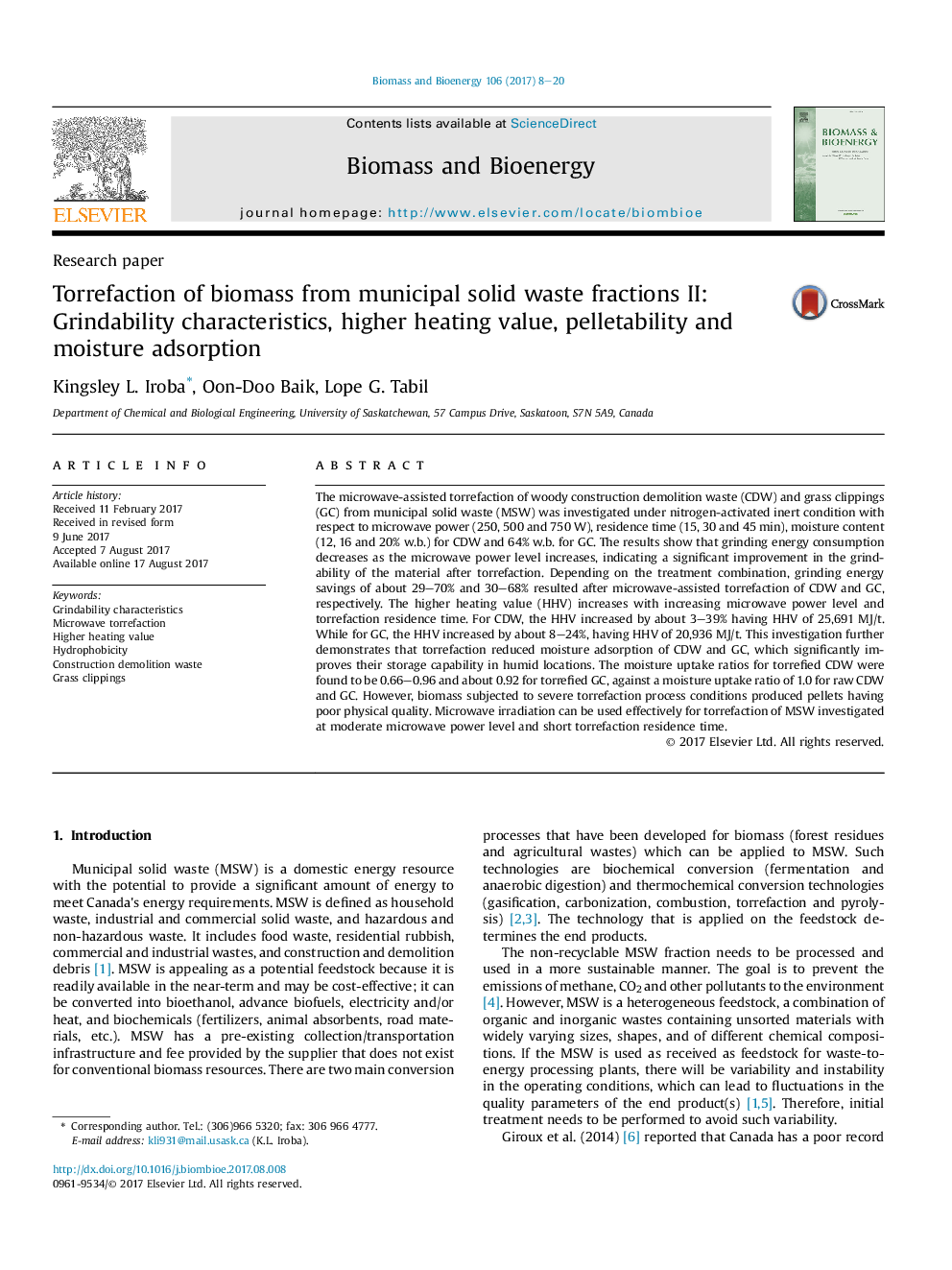| Article ID | Journal | Published Year | Pages | File Type |
|---|---|---|---|---|
| 4996191 | Biomass and Bioenergy | 2017 | 13 Pages |
â¢Grinding energy consumption decreases as the torrefaction microwave power level increases.â¢Higher heating value increases with increasing microwave power level and torrefaction residence time.â¢Torrefaction reduced moisture adsorption of municipal solid waste.â¢However, severe torrefaction process conditions produced pellets having poor physical quality.
The microwave-assisted torrefaction of woody construction demolition waste (CDW) and grass clippings (GC) from municipal solid waste (MSW) was investigated under nitrogen-activated inert condition with respect to microwave power (250, 500 and 750Â W), residence time (15, 30 and 45Â min), moisture content (12, 16 and 20% w.b.) for CDW and 64% w.b. for GC. The results show that grinding energy consumption decreases as the microwave power level increases, indicating a significant improvement in the grindability of the material after torrefaction. Depending on the treatment combination, grinding energy savings of about 29-70% and 30-68% resulted after microwave-assisted torrefaction of CDW and GC, respectively. The higher heating value (HHV) increases with increasing microwave power level and torrefaction residence time. For CDW, the HHV increased by about 3-39% having HHV of 25,691Â MJ/t. While for GC, the HHV increased by about 8-24%, having HHV of 20,936Â MJ/t. This investigation further demonstrates that torrefaction reduced moisture adsorption of CDW and GC, which significantly improves their storage capability in humid locations. The moisture uptake ratios for torrefied CDW were found to be 0.66-0.96 and about 0.92 for torrefied GC, against a moisture uptake ratio of 1.0 for raw CDW and GC. However, biomass subjected to severe torrefaction process conditions produced pellets having poor physical quality. Microwave irradiation can be used effectively for torrefaction of MSW investigated at moderate microwave power level and short torrefaction residence time.
